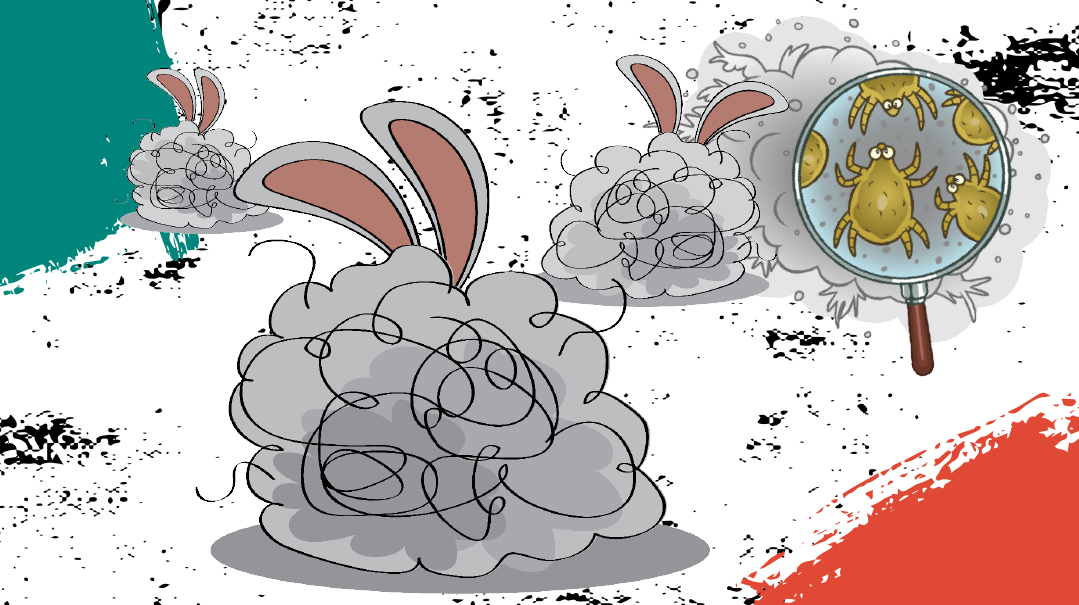When the Dust Settles

If dust isn’t chometz, just what is it? (Besides gross?!) And how does it just show up out of nowhere, especially after you just finished cleaning?

Don’t Lick the Dust
If you were staring down a giant dust bunny in the murky darkness under your bed, you’d see a hairy gray blob. That blob is actually a combination of many (yucky) parts. Dust is made up of tiny bits of matter. Dust particles come from all kinds of places, from soil and sand to grit carried by the wind, from pollen to pollution, from people and animal hair to fabric lint, from your dead skin cells to dust mites and decaying bugs, and even minute specks of burnt space rock and stuff you track in on your shoes, clothes, and even your hair…
Wanna feel a weensy bit special? The dust in your house is unique, kinda like a fingerprint of your home. It’s a down-and-dirty historical record of everything that’s ever entered and exited your home. It differs according to the local climate and geography, the age of your house, how many people live there, what the occupants cook and do for fun, what their cleaning habits are, whether they have pets, and more.
Okay, that’s not sooo special. But scientists think that one day, they may be able to analyze dust and actually pinpoint the exact neighborhood (or house) it originated in. (Right now, they can only identify general locations.) This could be quite useful in forensics, a branch of science that aids in crime research. Fight dust, fight crime.
Oops! We could not locate your form.






